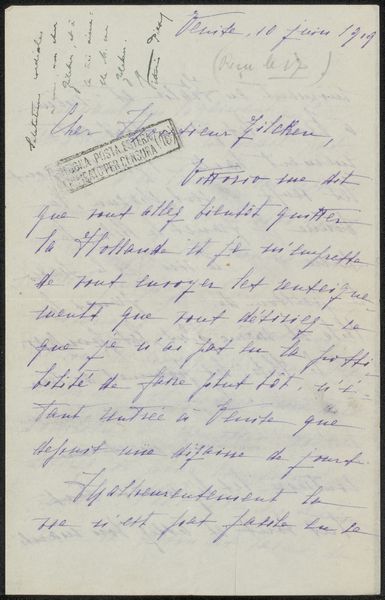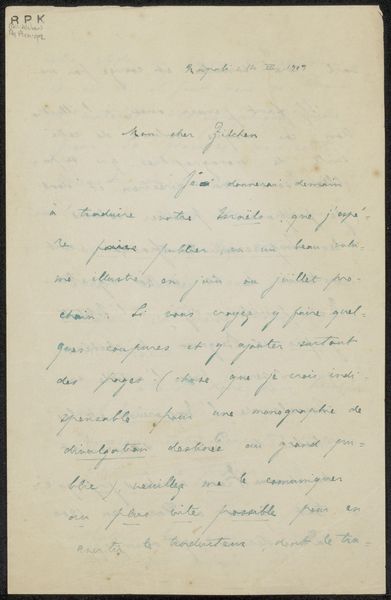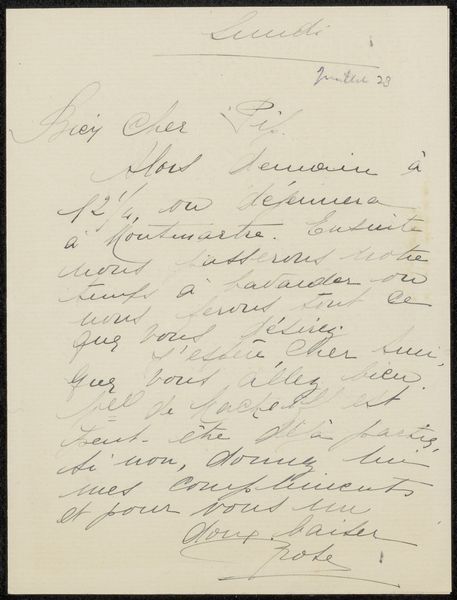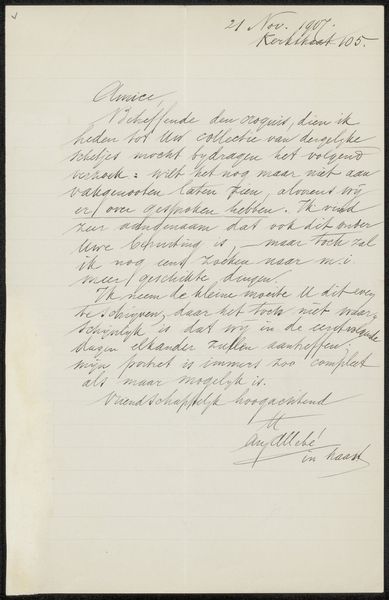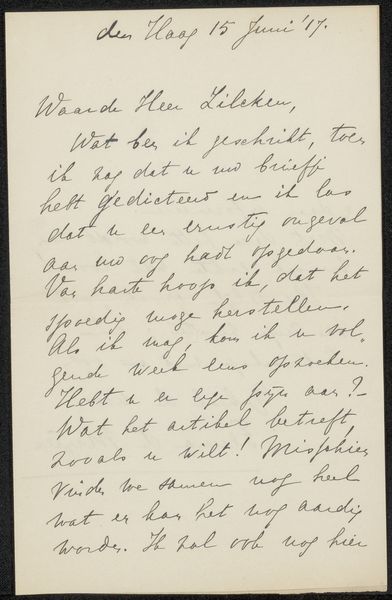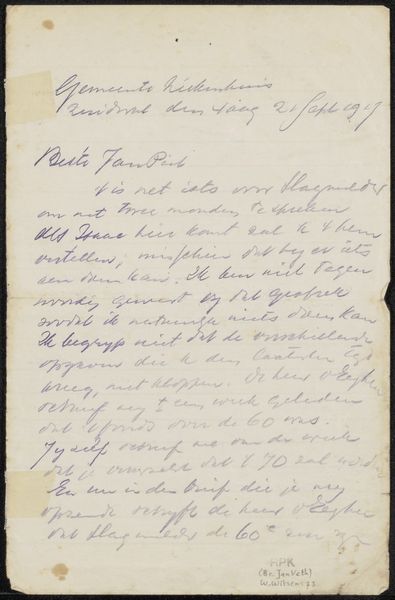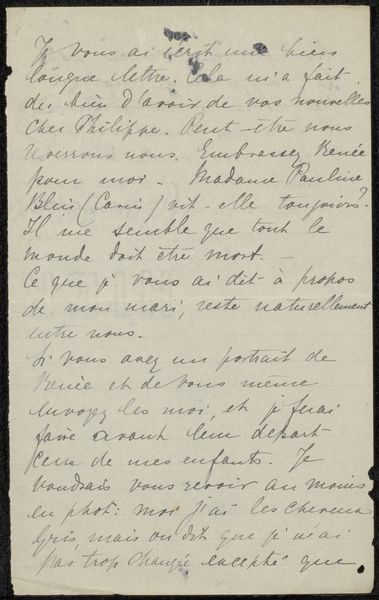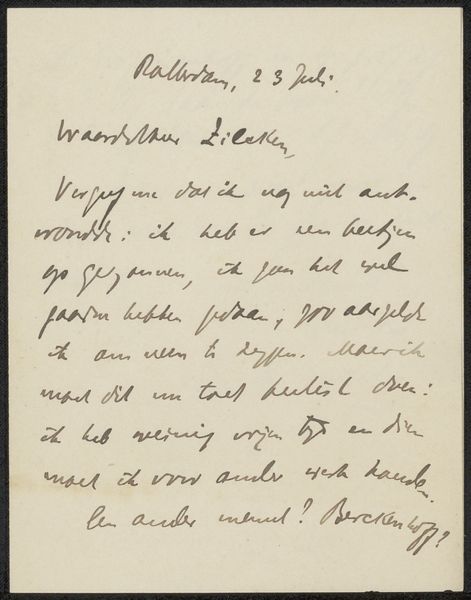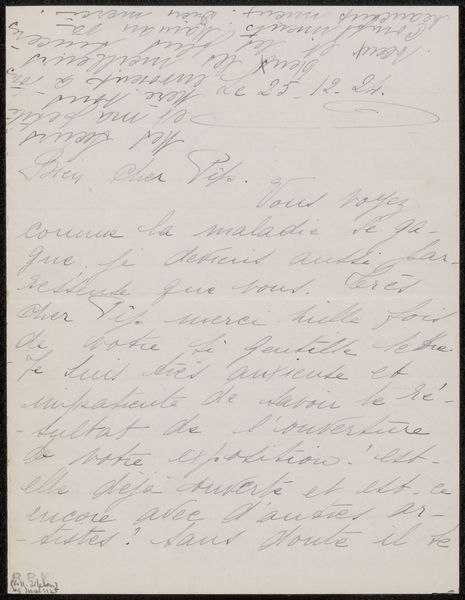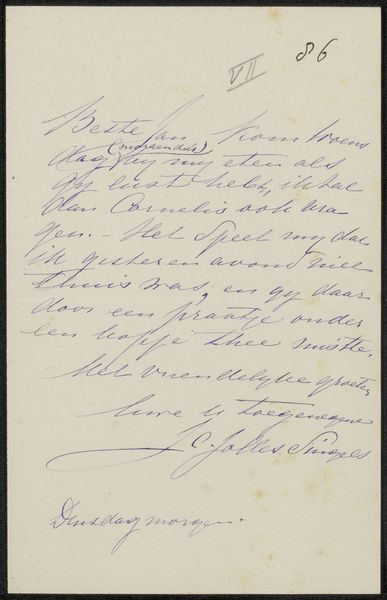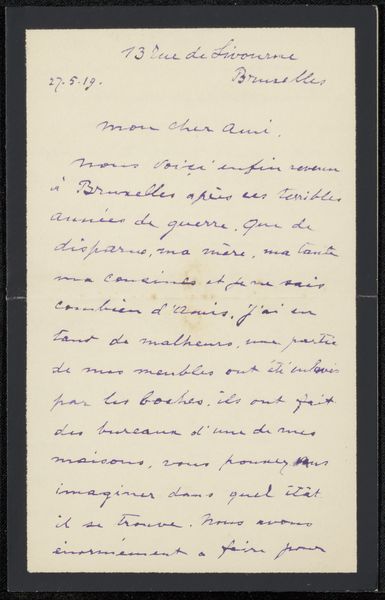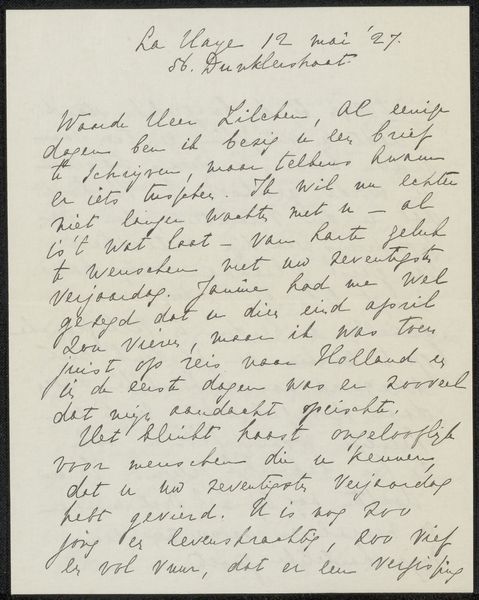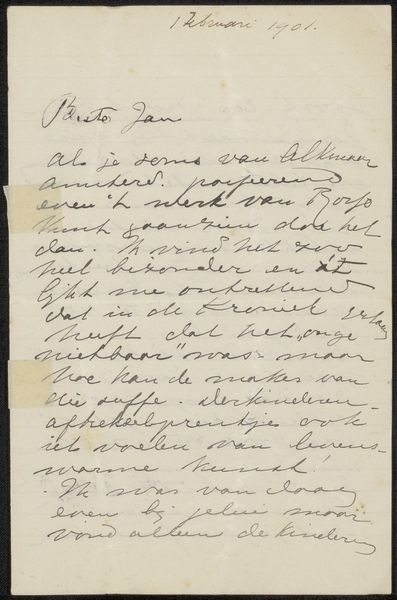
Copyright: Rijks Museum: Open Domain
Curator: I'm immediately struck by the intimate feel of this piece. Editor: It is indeed a very personal work, isn't it? What we have here is “Brief aan Philip Zilcken,” or "Letter to Philip Zilcken" a drawing potentially dating from the 1920s. It's rendered with pen and ink on paper. Curator: The energy is all in the line, isn't it? Look at the cursive script; it evokes a deep-seated history of letters as emotional artifacts. Each looping curve suggests vulnerability and presence. Editor: Yes, I think it presents some interesting formal challenges. Notice how the density of the ink varies across the page, creating a rhythm. This affects the negative space surrounding each letter, making the work quite visually complex. There’s a structural interplay between legibility and abstraction. Curator: I think what matters more, though, is the cultural memory ingrained in handwriting. We see a legacy of interpersonal communication. The very act of writing by hand, of physically forming those words, carries more emotional weight than any printed font could. You know? Editor: That's true, but I see how the repetition of certain letterforms, like the tall ascenders or the way the "e" is consistently formed, becomes almost a motif. I'm fascinated by that consistency combined with subtle variation. This structure enhances meaning itself. Curator: Indeed. But consider the symbol of a letter: correspondence builds shared histories. It binds individuals across distances, even across time. The symbolic function transcends mere semantics. This reminds me of handwritten samizdat passed around Soviet states. Editor: I suppose that the lack of formal elements almost serves to enhance it. What is there is stripped down, honest, in stark contrast to the contemporary art practices. A single writing tool; so pure in its execution and immediate emotional connection with both artist and recipient. Curator: Seeing this image definitely sparked new questions. What meaning is communicated across years of social change? The answers could fill volumes, if we knew all the history. Editor: This really gives us an invitation to look closely. Appreciating art, even one in so limited material, provides many different access points.
Comments
No comments
Be the first to comment and join the conversation on the ultimate creative platform.
